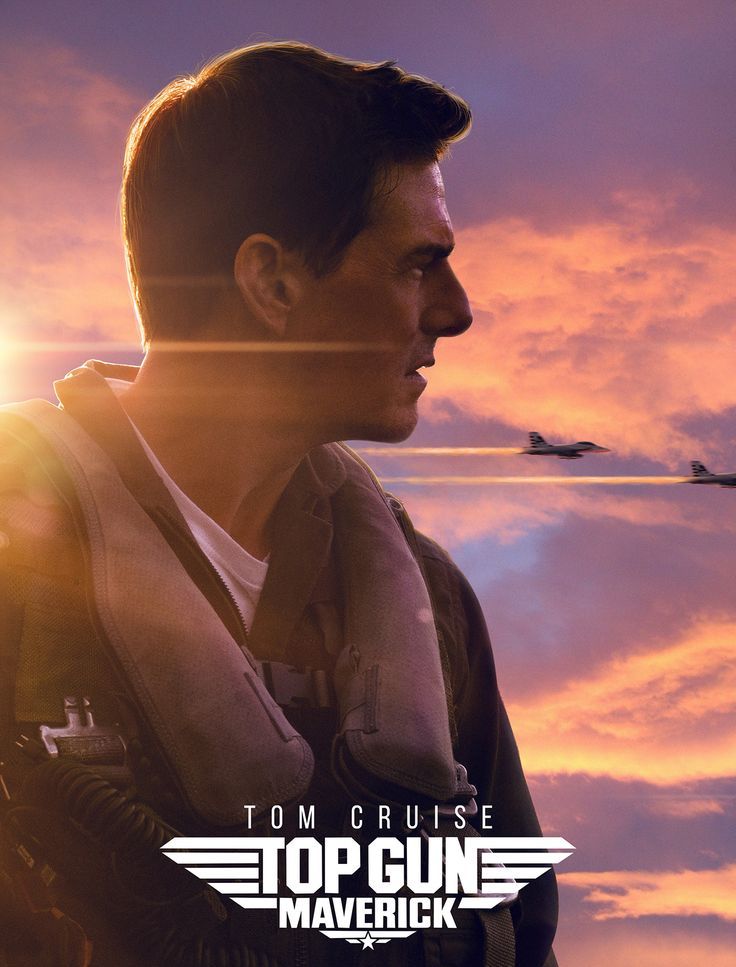At San Diego Comic-Con in July 2019, the actor shocked fans by stopping by and revealing the first trailer for the next “Top Gun: Maverick” film. A new teaser was published in December 2019 featuring even more action scenes.
Due to the coronavirus pandemic, the film’s cinema premiere has been postponed.
After the success of the first “Top Gun,” Cruise starred in the Academy Award-winning film “Rain Man” in 1988. He also appeared in “Born on the Fourth of July” (for which he received his first Academy Award nomination), “Days of Thunder” (for which he met Nicole Kidman, with whom he was married from 1990 to 2001), and “A Few Good Men.”
In the 1990s, Cruise also played the title role in “Jerry Maguire” and Frank T.J. Mackey in “Magnolia.” For both roles, Cruise was nominated for an Academy Award.
Because of his portrayal as Ethan Hunt in the “Mission: Impossible” franchise, the actor is a true action star. Cruise tested his limitations in 2018’s “Mission: Impossible — Fallout,” which was the sequel to 1996’s “Mission: Impossible.” While filming an action sequence for the film, the actor, who is famed for executing his own stunts, broke his ankle.
He’ll reprise his “Mission: Impossible” role in two upcoming films, “Mission: Impossible 7” and “Mission: Impossible 8.”
Between 2006 and 2012, Cruise was married to Katie Holmes. The couple has a daughter named Suri, and Cruise made news in 2005 when he openly declared his love for Holmes on “The Oprah Winfrey Show.”
Is “Top Gun: Maverick” based on a true story?

No, it is not based on a true story but definitely inspired by the prequel of the movie which was influenced by a lot of true events. The original Top Gun film on which the sequel Top Gun: Maverick is made was directed by Tony Scott and released in 1986, starred Tom Cruise as Pete “Maverick” Mitchell, a hotshot US Navy pilot who competes with other young pilots like Tom “Iceman” Kazansky (Val Kilmer) while also pursuing a romance with a civilian instructor named Charlie (Kelly McGillis).
Top Gun was a blockbuster picture that impressed many with its dogfights and violent flying scenes, many of which centered on Tom Cruise’s character, who notably piloted the F-14 Tomcat. It was nominated for four Academy Awards. In reality, Top Gun is acknowledged as having a significant impact on military recruitment, which explains why the US Navy cooperated so well with the film’s production. Following the film’s premiere, recruitment numbers skyrocketed, as it inspired a large number of young people to pursue careers as Navy pilots.
The military looks to have adopted a similar approach to Top Gun: Maverick, which places the title hero in the cockpit of a F/A-18F Super Hornet while training a new class of pilots. The US Navy provided access to a military facility and Navy personnel, and Paramount worked closely with them. To boost the film’s authenticity, cameras were affixed to the Navy’s Super Hornets. The military was heavily involved in the filming of Top Gun: Maverick’s action scenes in order to ensure that the film was as true as possible.
It’s unclear how that will play out, but what about the veracity of the first film? Here’s how much of Top Gun is inspired by true events.
In May of 1983, author Ehud Yonay wrote an essay in California Magazine titled “Top Guns.” The article was about a Navy pilot training complex in Miramar, San Diego, which was dubbed “Fightertown U.S.A.” It included aerial imagery and delved into great detail into the life of F-14 Tomcat pilots who completed the “Top Gun” course. The story was chock-full of details about what they went through when they took to the air at the training center. Quotes from pilots Yonay contacted for the narrative are included in the article, and their comments provide valuable insight into what it was like to fly these jets and how they were operated.
The F-14 Tomcat was described as “the United States Navy’s greatest air war machine, a gigantic luxury monster that could have been constructed by the Star Wars special effects department,” according to the report. Yonay is able to piece together a detailed picture of their day-to-day lives at the school, the obstacles they experienced flying the aircraft, and how their instructors “hammered them into a team” through conversations with the pilots.
Don Simpson and Jerry Bruckheimer, the producers of Top Gun, have confirmed that this California Magazine piece was the inspiration for their picture and that much of what was discussed in the story was used to create the film’s backdrop and events. Top Gun is an accurate picture of life as a US Navy pilot, according to several real-life aviators.
It succeeds in conveying the intensity of what it’s like to fly a jet and the lives of the pilots outside of the aircraft (apart from the beach volleyball). Given how heavily the Navy was involved in the production of Top Gun, it’s no surprise that it was able to do this. The Navy’s participation helped to avoid any major inaccuracies. Aviators have hailed the competitive attitude of the pilots, their connections with one another, and the camaraderie that exists between them as one of Top Gun’s best qualities.
The acting performances in the cockpit scenes have been praised for their realism in depicting pilots attempting to navigate their jets through maneuvers and away from missiles. Top Gun, unlike other films of its kind, does not make this experience feel smooth at all, and for good reason. The head-on passes in Top Gun are also very accurate, and they lend a lot to the film’s realism. There’s also Goose’s death, which occurred when the F-14 went into a flat spin and was ejected. It’s worth noting that Goose’s death in Top Gun was caused by real-life issues with the F-14 Tomcat, which adds to the twist’s stunning nature.
Of course, Top Gun is a fictional plot, but much of it is based on true events. After all, the location where the training takes place in the movie, as well as the “Top Gun” training program, really exist. Charlie, played by Kelly McGillis, was based on a real person, Navy defense strategist Christine Fox.
